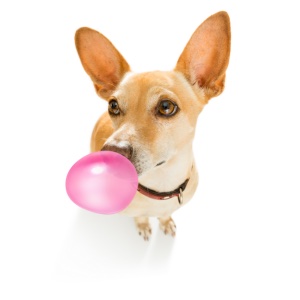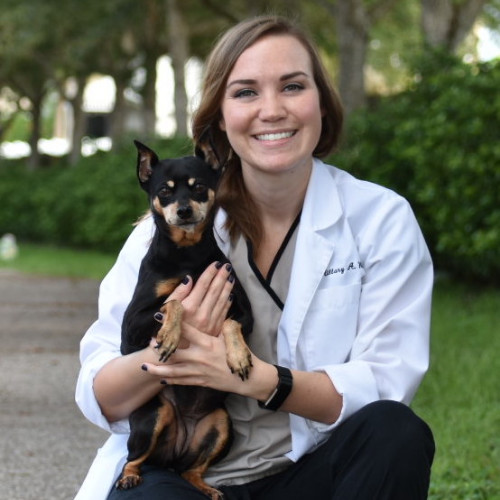Chewing gum is a commonplace item in our day-to-day lives, providing a quick remedy for bad breath or simply offering a flavorful delight. However, this harmless indulgence for us can potentially pose a serious health risk to our furry friends. Dogs are notoriously inquisitive, and it’s all too easy for them to get ahold of a piece of gum lying around. Therefore, it’s crucial for every dog owner to understand the dangers associated with gum consumption in dogs, and how to act in case of accidental ingestion.

The Hidden Dangers of Gum for Dogs
The primary concern about gum consumption in dogs lies in its typical content: a sugar substitute called xylitol. Xylitol, although safe for human consumption, can be extremely toxic to dogs. When a dog ingests xylitol, it triggers a rapid release of insulin in their body, leading to a dangerous decrease in blood sugar levels, a condition known as hypoglycemia.1 This can cause various complications, ranging from loss of coordination and vomiting to seizures, liver failure, and in severe cases, even death.
Quantifying the Variable Risk: How Much Gum is Dangerous for Dogs
The severity of symptoms from gum ingestion in dogs can vary greatly depending on several factors including the size of the dog, the type of gum, and the amount consumed. For instance, one or two pieces of gum may not cause severe symptoms in a large dog, but the same amount could be fatal for smaller breeds. The type of gum is also an important factor, as some contain a sweetener called xylitol.
Not all chewing gums contain xylitol, but many sugar-free varieties do, which is the most harmful ingredient in many types of gum.The toxic dose of xylitol for dogs is generally considered to be 0.1 grams of xylitol per kilogram of the dog’s weight, although severe reactions, including liver failure, can occur at doses as low as 0.5 grams per kilogram of body weight.
To put it into perspective, the xylitol content in gum can vary widely, but a single piece of sugar-free gum can contain anywhere from about 0.3 to 1 gram of xylitol. That means even one piece of gum could potentially be toxic to a small dog weighing around 10 kilograms (about 22 pounds).
Recognizing Gum Poisoning in Dogs
Recognizing the signs of gum poisoning is crucial and could be life-saving for your canine companion. Symptoms of xylitol toxicity can appear as quickly as 15 minutes after ingestion, and knowing what to look for is essential.
- Vomiting: This is often one of the first signs of xylitol poisoning. It’s a clear indication that your dog’s body is trying to expel the toxic substance. Don’t ignore it, as it can lead to dehydration if it persists.
- Loss of Coordination: If your dog seems unusually clumsy or unsteady on their feet, it might be due to a drop in blood sugar caused by xylitol ingestion. This lack of coordination, often resembling drunkenness, is a significant warning sign that shouldn’t be dismissed.
- Lethargy: Dogs suffering from xylitol poisoning may also show signs of unusual fatigue or weakness. If your normally energetic pooch suddenly seems uninterested in play or movement, it’s a cause for concern and requires immediate attention.
- Seizures: This is a severe symptom that indicates a high level of toxicity. It’s characterized by uncontrollable shaking or tremors. If your dog starts seizing, it’s a veterinary emergency and needs medical intervention.
- Jaundice: In severe cases, xylitol can cause liver damage, leading to a condition known as jaundice. If you notice a yellowing of your dog’s skin, eyes, or gums, it could be a sign of serious liver damage, necessitating immediate veterinary care.
Taking Action Against Potential Poisoning
If you suspect your dog has consumed gum, it’s important to act quickly. Remove any remaining gum from your dog’s mouth and contact your veterinarian or pet poison control center immediately.
If your vet is unavailable, an emergency animal clinic can provide guidance. Do not induce vomiting unless instructed to do so by a professional, as this can cause additional complications.
Your vet may recommend monitoring your dog for signs of toxicity, or they might suggest immediate intervention depending on the amount and type of gum consumed.
Safeguarding Your Dog from the Dangers of Gum
The accessibility and potential harm of chewing gum highlight the need for cautious and educated pet ownership. While it may seem trivial, an accidental gum ingestion can lead to severe health implications for our canine companions. Being aware of the dangers, recognizing the symptoms, and knowing what steps to take in case of ingestion can help ensure the safety and wellbeing of your furry friend. So, keep your gum and other xylitol-containing products out of your dog’s reach and always maintain a watchful eye on their explorations. Remember, it’s our responsibility to protect them from the dangers they don’t understand.
Citations
Xylitol Toxicity in Dogs, (2010).
Frequently Asked Questions About Dogs Eating Gum
-
Yes, any quantity of consumed gum warrants medical attention. Due to the potential presence of xylitol, a known canine toxin, it’s crucial to consult with a veterinarian as soon as possible after your dog has ingested gum, regardless of the amount.
-
While it is theoretically possible for gum to pass through your dog’s digestive system without causing harm, it’s not a risk you should be willing to take. Given the potential danger, particularly from the artificial sweetener xylitol, it’s always safer to consult with a veterinarian in case of gum ingestion.
-
Whether a single piece of gum is dangerous for your dog depends on various factors including the type of gum, the size of your dog, and the dog’s overall health. However, given that many gums contain xylitol, even a single piece can be harmful, especially to small dogs. If your dog ingests even one piece of gum, it’s important to contact a veterinarian immediately.

